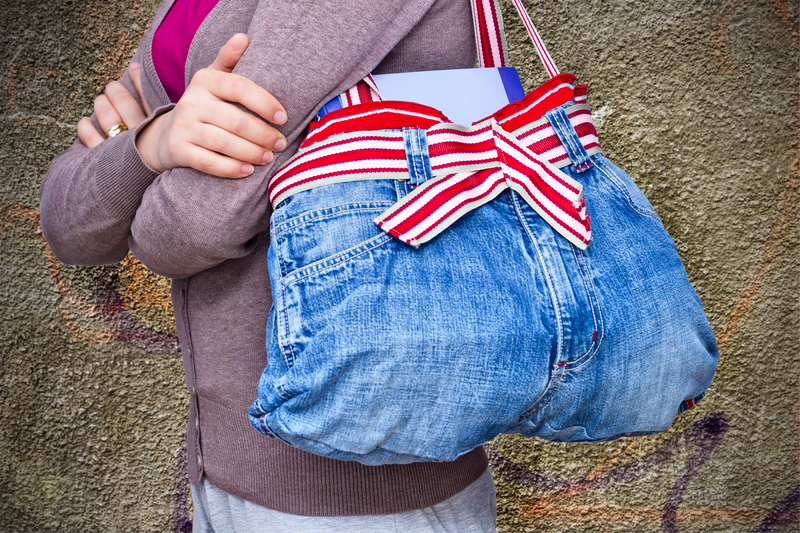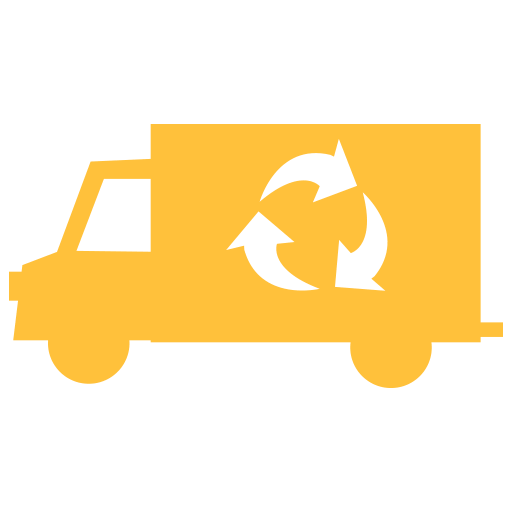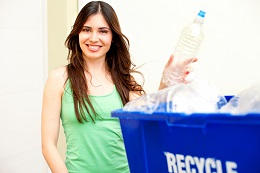Give Your Wardrobe a Second Chance: Recycling Tips
Posted on 03/10/2025
Give Your Wardrobe a Second Chance: Ultimate Guide to Clothing Recycling Tips
Looking to refresh your wardrobe without contributing to the fast-fashion waste crisis? Give your wardrobe a second chance with these expertly crafted clothing recycling tips! Learn smart methods to recycle, reuse, repair, and repurpose your old clothes, all while promoting sustainability and reducing your carbon footprint.

Why Is Wardrobe Recycling Crucial?
Fashion production has more than doubled in the last 15 years, leading to enormous amounts of textile waste in landfills--an environmental crisis that is hard to ignore. By recycling your clothing, you not only extend the life-cycle of your wardrobe but also support the global movement toward a circular fashion economy and help save precious resources.
- Reduces landfill waste: Millions of tons of textiles end up in landfills every year.
- Conserves energy and resources: Recycling means less water, energy, and chemicals consumed in manufacturing new clothing.
- Supports communities: Donated items can aid those in need or support non-profits.
Step 1: Assess and Sort Your Wardrobe
The first step to recycle your old clothes--a wardrobe audit. Set aside a couple of hours to dig deep into what you already own.
Sorting Tips for Effective Wardrobe Recycling
- Separate by Condition: Create piles for items that are gently used, worn out, or damaged.
- Identify Repurposing Potential: Spot clothes that can be upcycled, repaired, or transformed into new pieces.
- Check Fabric Content: Natural fibers like cotton and wool are more easily recycled than synthetic blends.
- Look for Sentimental Value: Set aside special items you wish to keep or creatively upcycle.
Step 2: Donate for Reuse
Giving your clothing a second chance in someone else's wardrobe is one of the most impactful and sustainable options. Donating is simple, but it's essential to do it right.
Best Practices for Donating Clothing
- Wash Before Donating: Ensure all items are clean and in wearable condition.
- Repair Minor Faults: Fix small rips, loose buttons, or broken zippers to extend the item's life.
- Research Local Organizations: Some charities have specific needs (e.g., women's shelters, children's charities) or may only accept certain items.
- Utilize Clothing Donation Bins: Look for official clothing recycling bins from reputable organizations in your area.
- Donate with Purpose: Consider swapping, selling, or giving away online. Platforms like Facebook Marketplace, Depop, or ThredUP make rehoming easy and rewarding.
Step 3: Repair and Revive - Upcycle Your Clothing
Before sending clothes out the door, consider repairing or updating them for your continued use. Clothing upcycling boosts sustainability and allows your style to evolve creatively!
Repair and Upcycle Ideas
- Patch Up Holes: Add playful fabric patches to jeans, jackets, or sweaters--both decorative and functional.
- Dye for a Fresh Look: Use fabric dyes to transform faded shirts into bold new fashion statements.
- Refashion Old Tees: Cut and knot to make unique tank tops or turn them into tote bags or cleaning rags.
- Accessorize: Repurpose scarves as headbands or old belts as bag handles for added style and utility.
- Shrink or Resize: Tailor oversized or misfit items for a better fit; great for thrifted finds too!
Step 4: Recycle - Responsible Textile Disposal
If your clothes are too worn for donating or repairing, textile recycling is the most sustainable way to dispose of them.
Where and How to Recycle Clothing Responsibly
- Find Textile Recycling Programs: Many cities have textile recycling facilities--look for community bins or schedule pickups.
- Retailer Recycling Initiatives: Brands like H&M, Levi's, and The North Face offer in-store drop boxes for used garments from any brand.
- Mail-In Programs: Some companies (e.g., For Days, TerraCycle) offer mail-back clothing recycling for a small fee.
- Check Fabric Guidelines: Ensure you follow the guidelines for acceptable items--rarely are shoes, handbags, or accessories taken with textiles.
- Community Drives: Participate in annual or seasonal recycling events for a fuss-free way to move unwanted items along.
Step 5: Get Creative - Repurpose Beyond Clothing
Old clothes need not simply be recycled or donated. Tap into your DIY spirit and give your wardrobe a second life beyond the closet!
Innovative Ways to Repurpose Old Clothing
- Home Decor: Sew cushion covers, quilts, or wall art from favorite fabrics.
- Cleaning Supplies: Cut soft cotton shirts into cleaning rags or dusters--zero waste!
- Gardening Aids: Use strips of old T-shirts as plant ties or woven into hanging baskets.
- Pet Projects: Turn sweaters into cozy beds for cats and dogs or make chew toys from tough denim.
- Gifting: Craft homemade bags, baskets, or wraps for an eco-friendly and personalized touch.
Eco-Friendly Shopping: Prevent Future Waste
The best way to keep your wardrobe sustainable is to avoid overconsumption in the first place--adopt mindful, eco-friendly shopping habits to keep waste at bay.
Smart Shopping for a Sustainable Wardrobe
- Buy Quality Over Quantity: Invest in durable pieces made from sustainable materials.
- Opt for Timeless Styles: Choose classic cuts and neutral colors that won't go out of style quickly.
- Support Ethical Brands: Shop from brands with fair labor practices and transparent supply chains.
- Use Clothing Rental Services: For special occasions, consider renting instead of buying new items you'll only wear once.
- Choose Secondhand: Thrift stores and online resale platforms offer chic, unique finds with lower environmental impact.
The Environmental Benefits of Clothing Recycling
From reducing textile landfill waste to conserving water and energy, the impact of giving your wardrobe a second chance cannot be overstated. Each ton of clothing recycled stops approximately 20 tons of CO2 emissions from entering the atmosphere.
- Conserves water: Producing a single cotton shirt can require up to 2,700 liters of water. Recycling means less new cotton grown and less water wasted.
- Reduces pollution: Diverting textiles from incineration and landfills lessens air and soil pollution.
- Saves money: Repairing, reusing, or repurposing means fewer new purchases, saving your wallet and the planet.
Frequently Asked Questions about Wardrobe Recycling
Can I recycle all types of clothing?
Most natural fibers (cotton, wool, linen) and many synthetic fabrics (polyester blends) can be recycled. Items with heavy embellishments, waterproof coatings, or mixed materials may be more difficult, but specialized programs exist--always check first.
What should I do with shoes, bags, or accessories?
Some shoe stores and brands offer special recycling programs (e.g., Nike's Reuse-A-Shoe). Bags and accessories can often be repurposed or donated, but check your local guidelines for recycling options.
Are there any clothing items I shouldn't donate?
Avoid donating soiled, moldy, or heavily damaged clothes. Torn, stained, or unusable items should go to designated textile recycling programs whenever possible.
Can clothing recycling be profitable?
Absolutely! Selling gently worn items through secondhand shops or online platforms (like eBay, Poshmark, or Vestiaire Collective) can put money back in your pocket while keeping clothes in circulation.

Make a Positive Impact: Start Recycling Your Wardrobe Today
Give your wardrobe a second chance starting today. Embracing these clothing recycling tips not only declutters your space but also significantly benefits the environment. Whether you choose to donate, upcycle, recycle, or get creative with repurposing, every action counts.
Remember: A sustainable wardrobe is one built on conscious choices. Prioritize quality, care for your clothes, support responsible brands, and recycle thoughtfully. Your fashion footprint matters--let's make it a green one together!
Key Takeaways for Responsible Clothing Recycling
- Assess, sort, and plan before discarding any clothing.
- Donate whenever possible to give items new life in another's closet.
- Repair and upcycle clothing to maximize value and minimize waste.
- Recycle textiles responsibly using community programs or retailer initiatives.
- Repurpose creatively for home, garden, or pets to maximize sustainability.
- Embrace mindful shopping and buy for longevity, not fast fashion.
Ready to transform your closet and help the planet? Give your wardrobe a second chance--start your clothing recycling journey now!

 020 3795 6999
020 3795 6999 020 3795 6999
020 3795 6999




 House clearance
House clearance Rubbish collection
Rubbish collection Here at Rubbish Junk we give you the unique opportunity to keep your home free of clutter at prices that will constantly please you. Other domestic clearance companies in London might be...
Here at Rubbish Junk we give you the unique opportunity to keep your home free of clutter at prices that will constantly please you. Other domestic clearance companies in London might be... Rubbish Junk knows what to do to keep your home rubbish-free. When you are facing a situation that requires clearance services,...
Rubbish Junk knows what to do to keep your home rubbish-free. When you are facing a situation that requires clearance services,...



